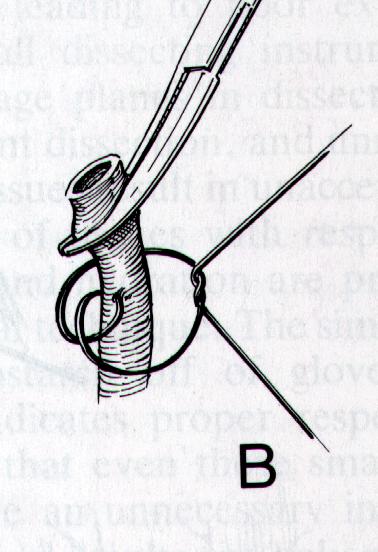
LIGATION OF BLOOD VESSELS AND VASCULAR PEDICLES First broadcast on www.provet.co.uk . As Part of Provet's Surgical Tips Fortnight |
This information is provided by Provet for educational purposes only.
You should seek the advice of your veterinarian if your pet is ill as only he or she can correctly advise on the diagnosis and recommend the treatment that is most appropriate for your pet.
There is nothing more frustrating to a surgeon than when a vascular ligature slips off - especially during routine elective surgery such as ovariohysterectomy in the bitch. Proper surgical technique can help minimise the likelihood of such complications with ligatures.
Ligatures are more secure than other methods of haemostasis - including clips, haemostats and electrocautery.
Here are some surgical tips for ensuring that ligatures do not slip :
Suitable materials for ligatures include:
- Cotton
- Chromic surgical gut
- Silk
- Synthetic absorbable sutures (eg polyglactin)
To minimise foreign body reaction :
- Use the minimum number of throws needed to form a secure knot
- Cut the ends of the suture material short (3mm for most; 6mm for surgical gut*)
* Because surgical gut swells on contact with tissue fluids and the knot can "untie".
Tying Ligatures :
- As a general rule - use a square knot to ligate blood vessels
- If you are using modern synthetic absorbable suture materials (eg polyglactin) use a surgeons knot
- If you are using surgical gut - do not use a surgeons knot because the friction that the extra throw creates can cause the suture material to fray and become weakened
- Use two hands when tying a ligature to provide even tension on both sides of the knot
- Never apply instruments such as needle holders or forceps to portions of suture material that will remain in the patient.
a. Ligating Isolated Blood Vessels
- Recommended maximum size of suture material = 3/0
- For large blood vessels two ligatures are advised, and one of these should be transfixed - take a bite into the wall of the blood vessel using an atraumatic swaged needle and fine (eg 4-0) ligature material
Diagram Reproduced from Textbook of Small Animal Surgery 2nd edition by Slatter (Saunders) 1993 with the kind Permission of Harcourt Publishers.
b. Ligating a Vascular Pedicle
- Recommended maximum size of suture materials for pedicles = 0
- Small pedicles :
- Use 3 forceps to crush tissue pre-ligation
- Apply ligature over tissue crushed by the bottom forceps
- Cut pedicle between the top and middle forceps
- Large (wide) pedicles
- Use a modified Millers knot
- Use more than one ligature across the pedicle
Recommended Further Reading :
Textbook of Small Animal Surgery by Slatter.(Saunders)
Updated October 2013
